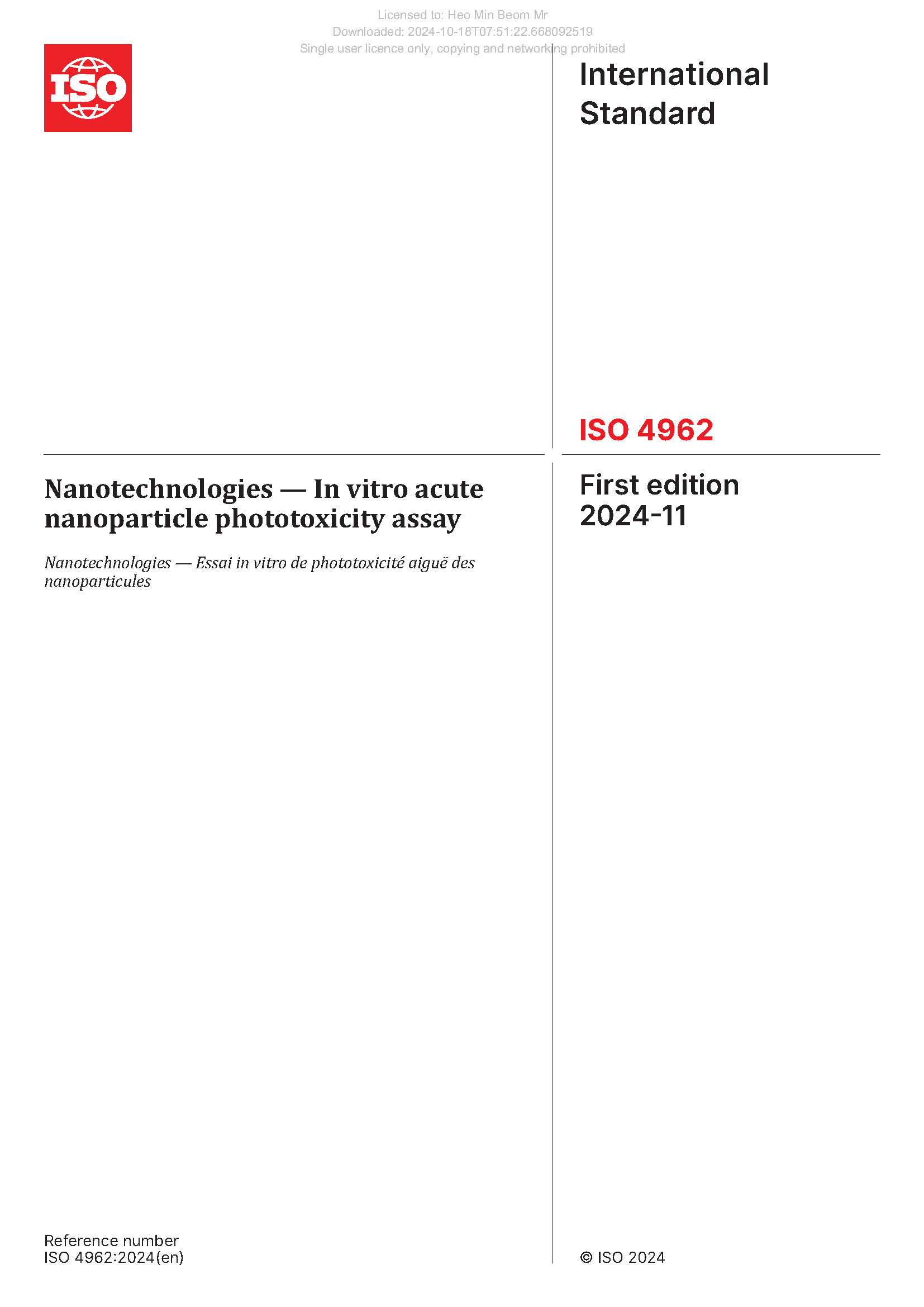* Nanoparticles: Particles with a diameter of 1 to 100 nm (nanometers; 1 nm is about one 100,000th of the hair thickness). Thanks to its tiny size, nanoparticles have superior physical and chemical properties to existing materials.
The ‘acute nanoparticle phototoxicity* assay’ method, jointly developed by the KRISS Nanobiometry Group and the U.S. National Institute of Standards and Technology (NIST), has been adopted as the international standard for nanotechnology (ISO 4962). With the establishment of an international standard that manufacturers and testing institutions around the world can trust and follow, it is expected that consumers will be able to use safer cosmetics.
* Phototoxicity: A phenomenon in which a specific substance causes a toxic reaction in living tissue when exposed to light.
The UV-blocking cosmetics we use contain nanoparticles such as zinc oxide (ZnO), titanium dioxide (TiO2), and silicon dioxide (SiO2). Zinc oxide and titanium dioxide block UV rays, and silicon dioxide improves the texture of cosmetics.
However, these nanoparticles generate reactive oxygen species (ROS) when reacting with ultraviolet rays. ROS attacks living tissues and causes skin diseases with its strong oxidizing power. Therefore, to minimize the negative effects of cosmetics on the skin, the phototoxicity that occurs when nanoparticles react with UV rays must be accurately measured and improved before commercialization.
The problem is that to date, there has been no standardized test method for measuring the phototoxicity of nanoparticles. There was a method proposed by the OECD (OECD 432); however, this test method was developed for completely soluble chemicals and is difficult to apply to insoluble nanoparticles.
The ISO 4962 test method, developed by a joint research team of KRISS and NIST and approved as an international standard, is a standardized assay method for measuring the phototoxicity of nanoparticles according to UV exposure. According to this method, cultured skin cells are directly exposed to nanoparticles and then the viability of the skin cells is measured by irradiating UV rays at 10-minute intervals.
With the establishment of this internationally recognized testing methods, the safety of UV-blocking cosmetics is expected to increase significantly. Manufacturers can improve the phototoxicity and side effects of developed products through preliminary testing, and testing institutions can effectively manage the hazards of marketed cosmetics on the human body.
In addition, as the safety regulations in global cosmetics markets such as the U.S. and China are gradually strengthened, it is expected that this new testing method will serve as a guide for Korea’s cosmetics companies to ensure safety that meets international standards.
Meanwhile, KRISS and NIST have been conducting research cooperation for the development of measurement technology in the field of nano-safety in accordance with the ‘Korea-US Joint Committee on Science and Technology Cooperation’ agreement in 2014. In 2019, through joint research, ‘Measurement method for photocatalytic activity of nanomaterials’ was listed as an international standard (ISO/TC 229), and as a result of steadily expanding international cooperation research, they achieved the feat of listing their second international standard.
Principal Researcher Heo, Min Beom of the KRISS Nanobio Measurement Group said, “In the future, we will establish reliable evaluation criteria so that nanomaterials can be safely used not only in cosmetics but also in various fields of industry and society.”
This research was supported by the Measurement Standards and International Certification System Establishment Research Project for Setting National Nano-Safety Standards funded by the Ministry of Science and ICT.


